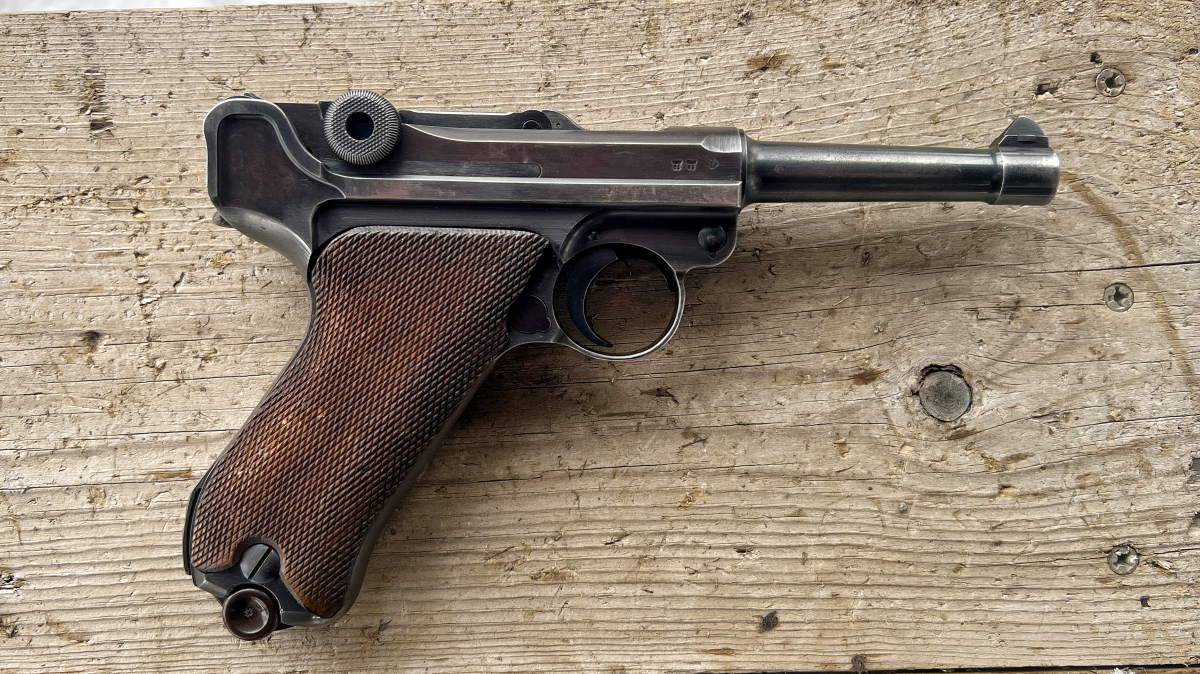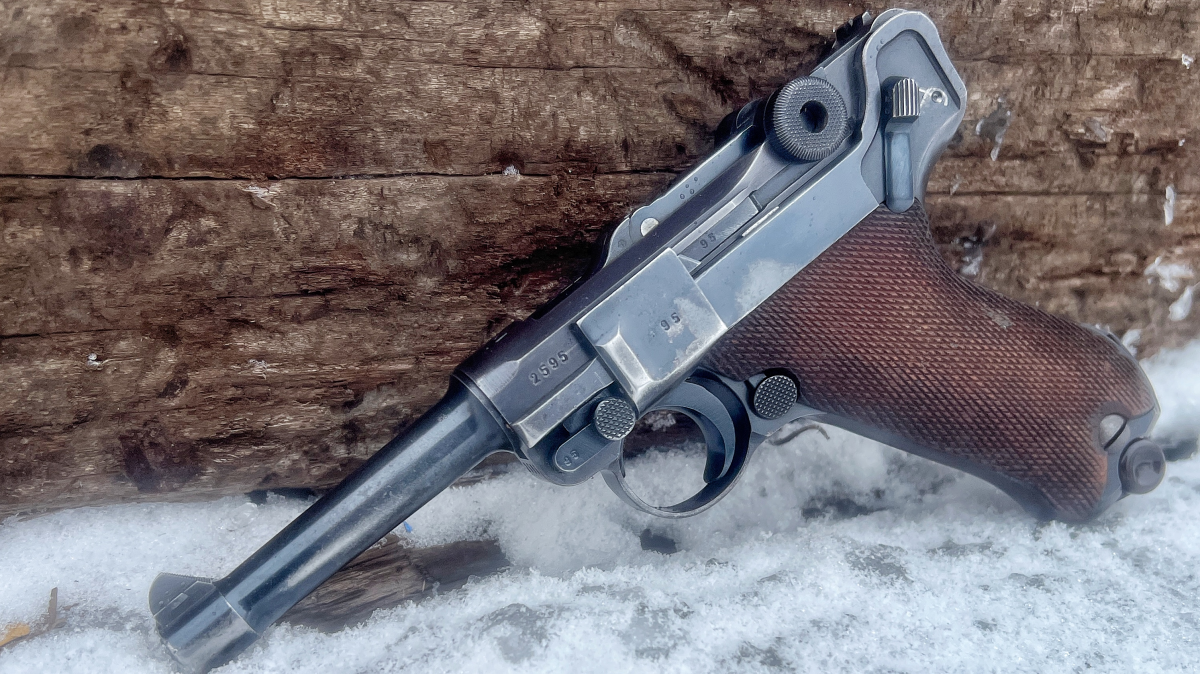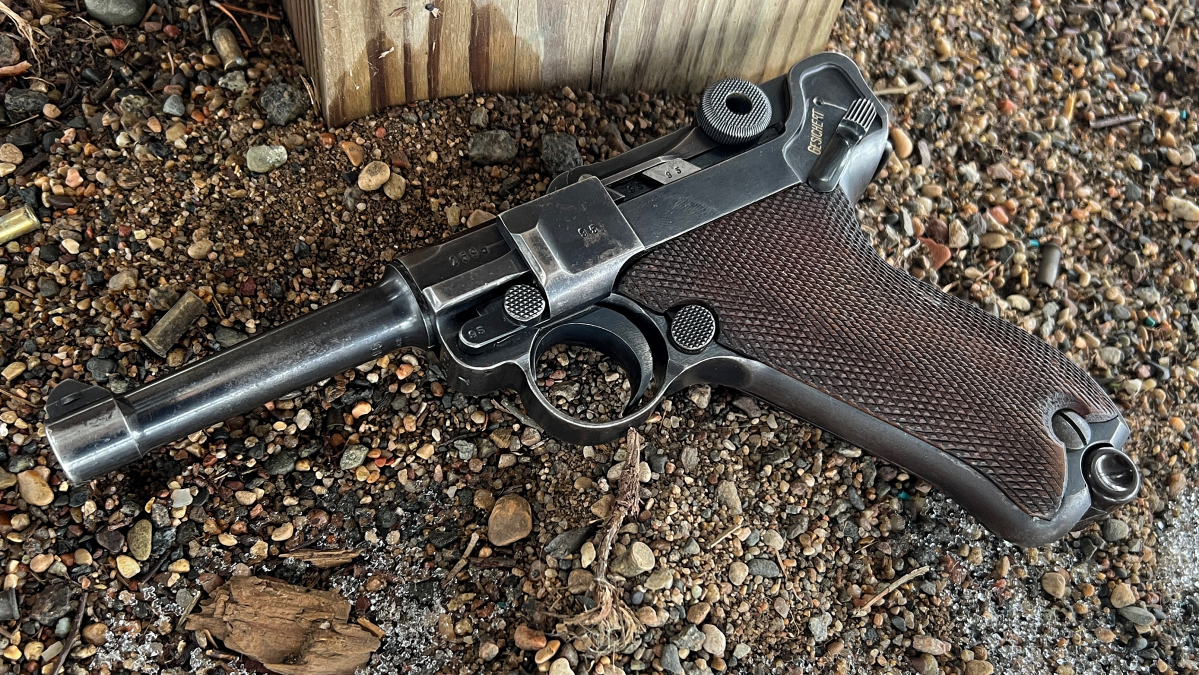Curious Relics #061: Another Beloved Icon – The Luger
Sam.S 04.05.23
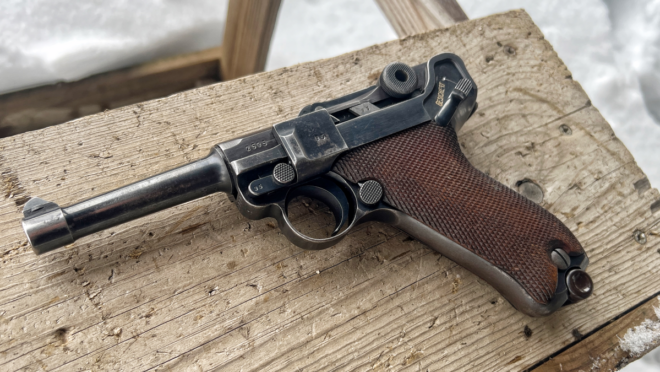
Welcome, if you are a newcomer to this fun bi-weekly segment of AllOutdoor.com! The last time around I covered one of my favorites, the Mauser C96, and a wonderful resource in the form of a book; Paul Mauser – His Life, Company, and Handgun Development 1838-1914. In this article, we are diving back into the actual gun stuff and kicking things off with another beloved icon of a firearm. The famous Luger pistol in all of its toggle-locked glory. Let’s dive right in!
Welcome to our recurring series of “Curious Relics.” Here, we want to share all of our experiences, knowledge, misadventures, and passion for older firearms that one might categorize as a Curio & Relic – any firearm that is at least 50 years old according to the ATF. Hopefully along the way you can garner a greater appreciation for older firearms like we do, and simultaneously you can teach us things as well through sharing your own expertise and thoughts in the Comments. Understanding the firearms of old, their importance, and their development which lead to many of the arms we now cherish today is incredibly fascinating and we hope you enjoy what we have to share, too!
The First Commercially “Successful” Autoloading Handgun
In 1893 German-born Hugo Borchardt unveiled his autoloading handgun to the world. The Borchardt C93 was revolutionary and rather modern in multiple aspects. It was reliable (for the times standards), and accurate, and it was fed by a box magazine hidden in the grip. What followed has been touted by myself and countless others. It was a commercially successful autoloading handgun and better yet the first commercially successful autoloading handgun. What few people bring up is the C93’s commercial success was only due to a small roughly 3000-unit production run. This was a lot back in the day as far as this newfangled technology went. There may have been 3000 made but a great many sat in storage unsold well into the 1910s.

Lot 1589: Loewe 1893 Borchardt Pistol – Ludwig Loewe Model 1893 Borchardt Semi-Automatic Pistol with Matching Numbered Magazine. (n.d.). Rock Island Auction Company. photograph. Retrieved April 4, 2023, from https://www.rockislandauction.com/detail/77/1589/loewe-1893-borchardt-pistol.
The Borchardt C93 was a giant clunky unbalance gun. If you ever see a video of someone shooting its rather anemic cartridge (in comparison to what we have today) it looks rather snappy due to a lot of mass moving at the rear. the rear already was heavy due to its spring apparatus located in the rear. The Ludwig Loewe company (later DWM) that owned the rights to C93 requested multiple modifications to the design over its commercial lifespan. All requests were met with utter disinterest by Hugo Borchardt. He thought it was a perfect pistol as is and need no change. The seasoned inventor was much busier investing in the gas vs electric race that happened at the turn of the century. He was for gas in homes. Today we all know that electricity won out.
History Abridged: The Luger
With Hugo Borchardt passively refusing any alterations to his now-famous creation the Ludwig Loewe company looked to their current employee Austrian designer Georg Johann Luger to refine a proven concept. He had a background in engineering but was employed as a weapons tester, demonstrator, and salesman. With his engineering background, he was approached to improve the C93 since Swiss military trials were announced and they would be looking at pistols. Georg Luger was an intelligent numbers man that methodical in the simplification of his new pistol refinement. He already had a whole host of patents under his belt as well as a successful lawsuit of Paul Mauser himself over a rifle design.
Initial 1894 military trials saw the Borchart C93 facing off against many notable firearms of the day but non more notable than the Mauser C96. Both performed very well and were well received because of their high-velocity cartridges and reliability. The downside however is that the C93 had more critiques than praise due to its awkwardness. Georg Luger took these critisms to the drawing board after Borcharts apathetic refusal to improve.
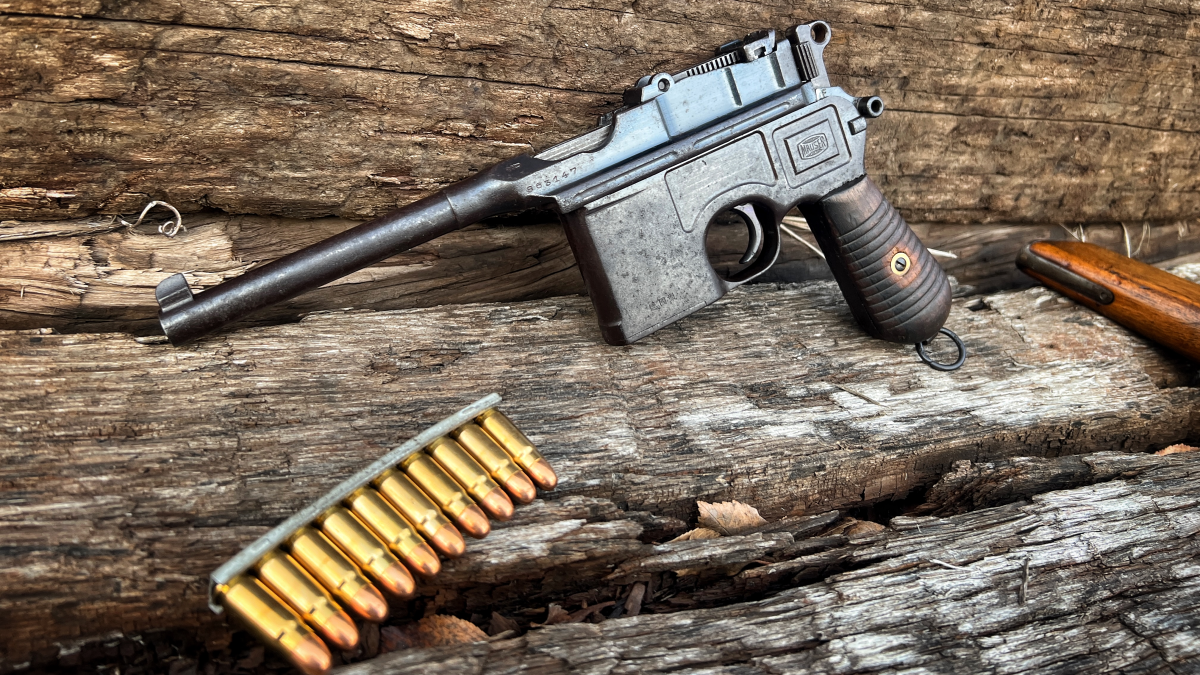
With Luger’s early Swiss trials showing off the C93 in mind, he already had ideas on how to tighten some things up. Fast forward to 1898/1899 and Luger had produced a prototype of his…Luger and its new 7.65 Luger cartridge, another high velocity 30 caliber bottlenecked cartridge. The new cartridge was shorter than that of the Borchardt cartridge so it was capable of being stacked in an angled manner. this gives the Luger as we know it a wonderfully comfortable sloped one-handed hold grip. The toggle linkage and pivot point were simplified (even though Luger did not reveal this in his drawings). Luger’s new redesign of the toggle action utilized a slop at the rear of the gun for the linkage to ramp off off. This also negated the use of the large clock spring wond at the rear. The prototype performed well and favorably next to many autoloading handgun designs of the late 1890s. Notable competition would have names such as Mannlicher, Bergman, Mauser, Steyr (Roth), and Sig.
Long story short the Luger won the Swiss trial and all they needed to seal the deal was three things. The Swiss requested a manual safety (in addition to the already present grip safety) that could be operated with the swipe of the thumb, the weight reduced, nd a “loaded magazine indicator”…yep they wanted a way of knowing if a magazine was in the gun. This is early history in autoloading handguns, folks. They took measures that today are completely unnecessary because a military autoloading handgun at this time was unheard of. The Swiss adopted the Luger and it became the Model 1900.
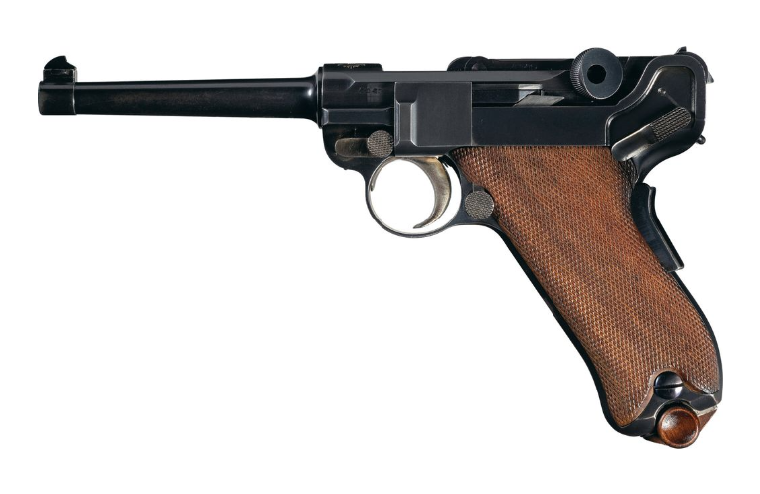
Lot 505: Early Dwm Model 1900 Swiss Contract Luger Semi-Automatic Pistol – Desirable Extremely Early Three Digit Serial Number Dwm Model 1900 Swiss Contract Luger Semi-Automatic Pistol with Rare Unrelieved Frame, Accessories and Publications. (n.d.). Rock Island Auction Company. photograph. Retrieved April 4, 2023, from https://www.rockislandauction.com/detail/85/505/early-dwm-model-1900-swiss-contract-luger-semiautomatic-pistol.
Now that the Luger was a home run with the Swiss, DWM looked to show their successful handgun to Germany in 1901. Amongst many critiques, the biggest was the cartridge. At this point in time warfare had proven that a larger slower moving bullet typically had more man-stopping merits than a speedy small bullet. They did not like the grip safety and they requested a cocking indicator. Luger supplemented the later request with a loaded chamber indicator built into the extractor. With military trials sprouting up all around the world and the Luger taking part in most of them, Luger was concerned with the new cartridge dilemma. They had tooled up to make a batch of 45 ACP Lugers for military testing (primarily in the US…we like big bullet = big hole) and this took a whole redesign of the gun. Luger wanted the new cartridge to fit into the frames of the 30 Luger guns. This birthed the most common pistol cartridge in the world today, the 9mm Luger.
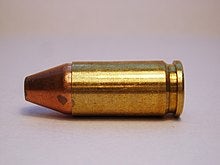
Many transition models would pop up after 1901 due to their roles in military trials and Georg Luger taking constructive criticism seriously and delivering on potential customers’ requests. in late 1907 German trials still raged on with what is dubbed the “new Luger” serving with mixed military units in the field for feedback. These all notably still retained the grip safety which was gotten rid of later. By 1908 the Luger despite its known forms was basically settled on. Chambered in 9mm Parabellum (a DWM buzzword/marketing idea) this “new Luger” is what most of us know and love today. To us, it is called the Luger P08. It no longer had a grip safety and the rest of its core features remained the same. This is the design officially accepted and adopted by the German military.
Note: A small amount of very early “new Luger” pistols did not have a bolt-hold open mechanism since the German military wanted to keep parts to a minimum. During World War One it was quickly found out that this can be handy in knowing when you need to reload. By 1915 all Luger handguns were being produced with the bolt hold open as well as old stock retrofitted.
At this point, I am going to fast forward and gloss over quite a bit since this gun has such a rich and wide span of history just like the Mauser C96 before it it is just too much to cover. The Luger P08 would see service in World War One alongside countless variations. By all written accounts it performed admirably and like most things, in The Great War, no one complained that they had too many, only that they did not have enough. The Luger has an air of fiction surrounding it since people may guess that it was unreliable when subjected to dirt and mud in the trenches, no such reports exist even though to some extent it is probably true.
The Luger would see German service specifically into World War Two where they became a prized trophy by allied troops. The Luger was technically replaced by the Walther P38 but this was just before World War Two broke out and in a time of war you work with what you have. Since the world wars of yesteryear, popular cultures like movies, video games, and tv shows have idolized and shown off the Luger pistol in all of its glory. Rightfully so since it is a great part of handgun history. The downside is despite the extremely high production numbers and a wide array of Luger pistols out there in circulation the aftermarket prices of these guns have skyrocketed.
End of Part One: The Luger
As with all of these iconic firearms, I must close out part one but fret not there will be more parts to come detailing the ever-expanding world of the Luger pistol in all of its glory. As I mentioned there is a lot more history to these guns than I could ever cover so make sure to keep a lookout for anything to do with their rich history during the wars. Next time tune in to check out a long list of variations and hopefully, after that, we will dive into dating as well as spare parts for the little beauties. Excited to see you next time!
I want to say a heartfelt thank you and a big shoutout to my friend Steve Murphy for loaning me his Luger. It was a wonderful piece to work with and an absolute beauty that cannot be fully captured in pictures. This article would not have happened as soon as it did without you, Steve! Thank you.
In closing, I hope our Curious Relics segment informed as well as entertained. This all was written in hopes of continued firearm appreciation and preservation. We did not just realize how guns were supposed to look and function. It was a long and tedious process that has shaped the world we live in. So, I put it to you! Is there a firearm out there that you feel does not get much notoriety? What should our next Curious Relics topic cover? As always, let us know all of your thoughts in the Comments below! We always appreciate your feedback.
